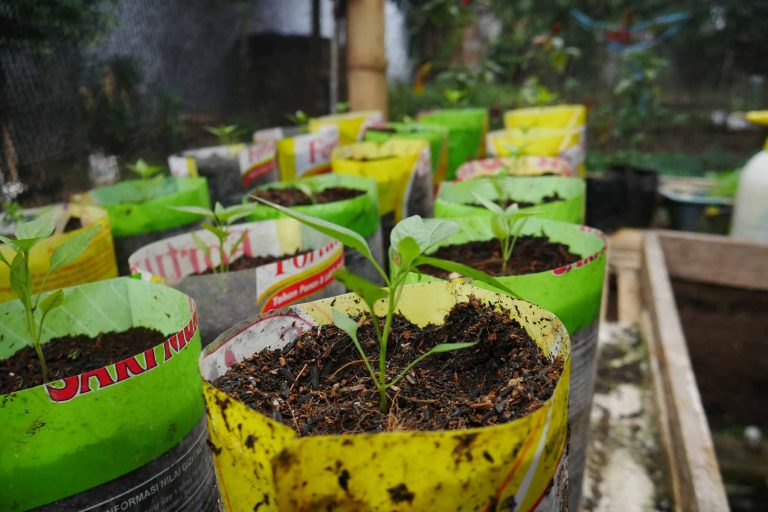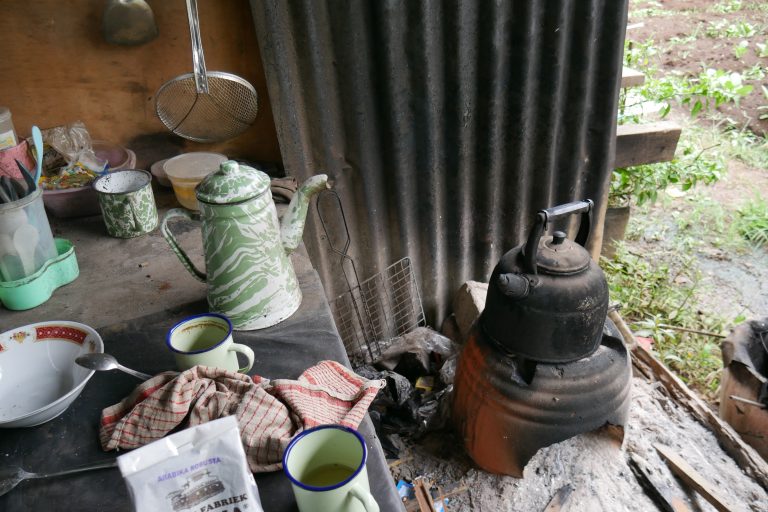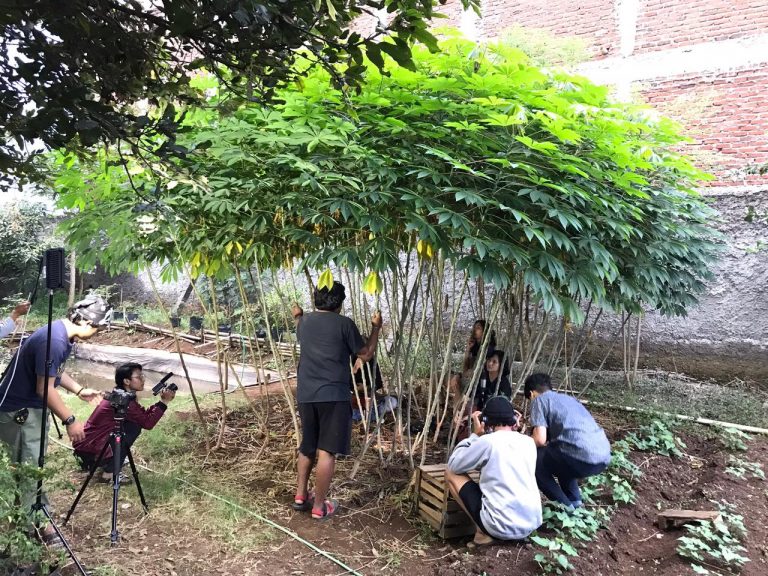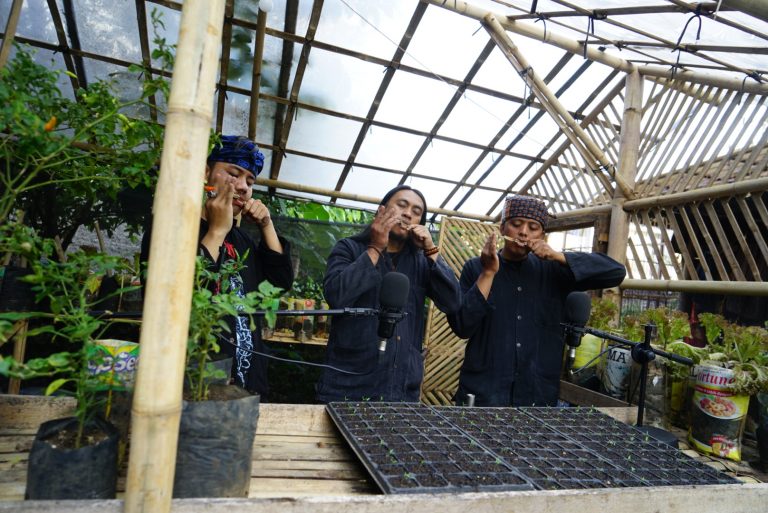“By sharing traditional ecological knowledge using different mediums, many people can learn”
Sedekah Benih is a collaborative project between artist Vincent Rumahloine and environmental activist Mang Dian, which combines art, design, activism, science, music, technology and traditional ecological knowledge. Sedekah Benih aims to preserve traditional ecological knowledge, generate appreciation for tiis leungeun (an Indonesian term that roughly translates as “green thumb”), and connect people through food. The duo shares how the project has been shaping up.
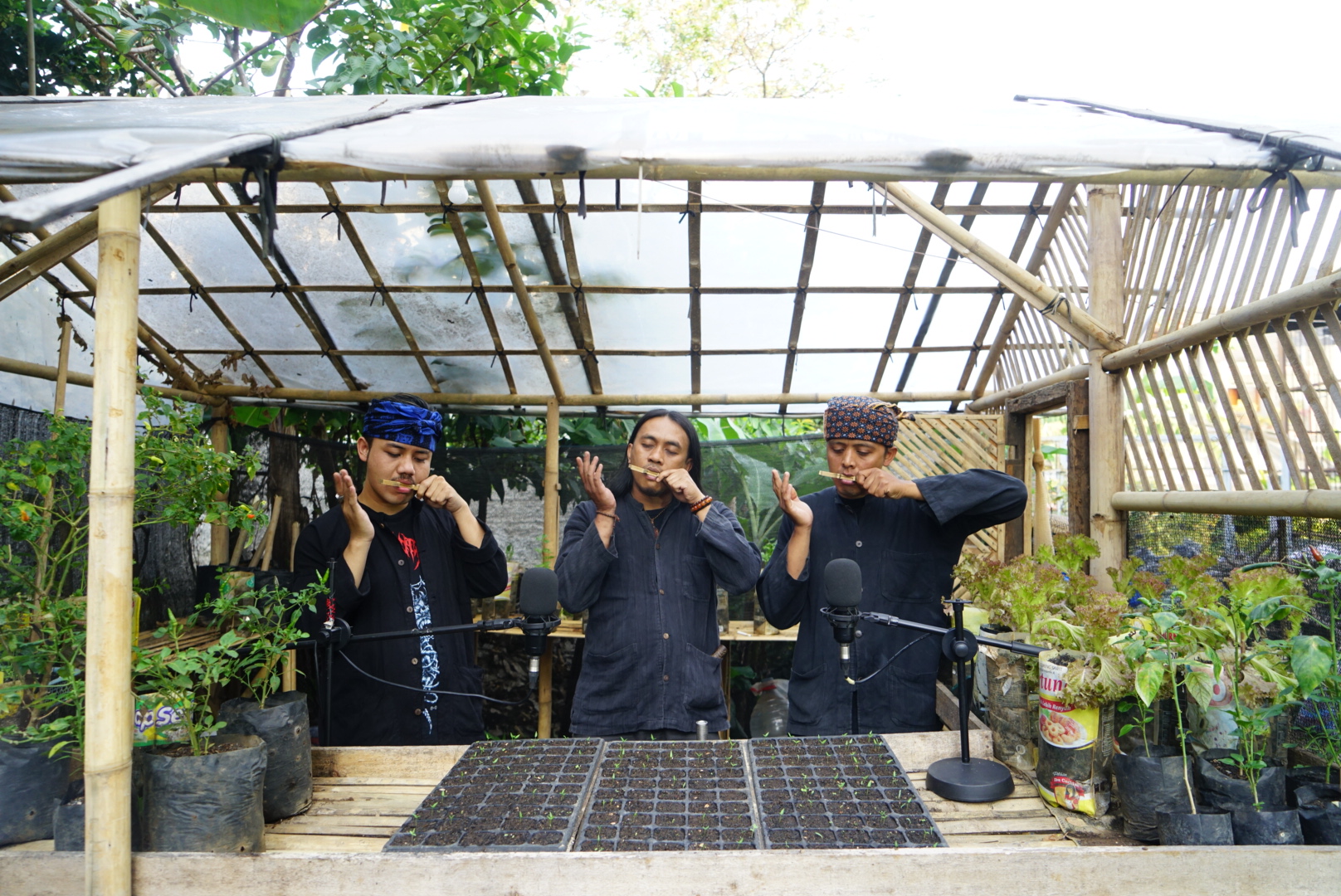
When and how did your project start?
Initially, the project idea came from Mang Dian in 2015 when the price of chili in Indonesia rose really high and became a problem, since it is one of the essential ingredients in Indonesian food. We thought, why don’t we share the chili plants with the community so they can grow their own? Mang Dian and I have been working together since 2014, and met again last year to update our activity and reflect on how the pandemic was affecting our life. During our conversation, we decided to collaborate and share the chili plants with our friends and combine my skills as a visual artist and Mang Dian’s experience in urban farming and environmental issues. Our idea is to share the chili seeds and collect the traditional knowledge from tiis leungeun. After we prepared our plan, we applied to Driving the Human and kicked off the project in April 2021.
What is the profile of the project collaborators?
Some of the project’s collaborators come from traditional music because it is closely connected with traditional agriculture practices. They used karinding (a Sundanese traditional musical instrument from West Java and Banten, Indonesia), the one we’ll present in October in Berlin, as a tool to communicate with the plants and also the animals that already use the space.
We are also collaborating with film students to document the process, and we have a growing group of collaborators such as schools, musicians, activists; as well as the Goethe Institut, and the government to support this project.
Which stage is the project in?
We are now in the second stage out of three. We now have an open call for participants that are interested in adopting a chili plant. The plants are already getting a “special” treatment using karinding.
In this phase of your research, what are the two most important aspects of the project?
We found the most important aspect is silaturahmi, or the connection. We saw that what we invest is not money but relations. These relationships created a ripple that is really important for our project, since it grows (like plants do) in a direction that we never expected before.
What are the next steps in the research?
The next step is to collect additional traditional knowledge related to environmental issues, especially those connected with art and science. We already have some exciting information. But we were not expecting to reach this research stage so fast.
How could we improve our relationship with nature?
We could improve our relationship with nature by understanding it as equal and a partner in the ecosystem, not seeing it only as an object. By sharing traditional ecological knowledge using different media, many people can learn it.

